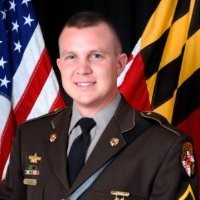On November 13, 2015, we all watched in horror as a series of coordinated terrorist attacks devastated Paris, France. A bombing at a stadium during a football match, mass shootings at busy restaurants, and a hostage stand-off at a concert venue that all resulted in 130 deaths. This was not the first time the world saw a complex coordinated attack, but after this particular event, the National Capital Region Homeland Security Executive Committee at the Metropolitan Washington Council of Governments (COG) formed the Complex Coordinated Attack (CCA) Working Group. This group of subject matter experts from across the region have worked together over the last four years to make key investments to be prepared in the case of a complex coordinated attack in the D.C. region.
One of the efforts was to educate public sector personnel about critical decisions and actions needed to prepare for and respond to a coordinated attack. Hundreds of officials from the local, state, and federal levels gathered at the Marriott Marquis in Washington, D.C. on April 23, 2019 for the National Capital Region Complex Coordinated Attack Symposium. COG managed the planning and production of the event with direction from the CCA Working Group.
During the opening remarks, COG Executive Director Chuck Bean, Federal Emergency Management Agency Deputy Administrator Dan Kaniewski, and I all emphasized the importance of planning for complex security threats and incidents.
The first keynote speaker, retired Boston Police Chief Dan Linskey, quickly grabbed the attention of the audience with a passionate recount of his experience as incident commander during the Boston Marathon bombing. The former police chief described the key decisions that were made in the initial minutes following the explosion that led to many lives being saved, such as: ambulance access to the scene, social media updates, and existing relationships with partner agencies. Chief Linskey pointed out the struggle of managing the runners still on the course, the countless bags left behind at the scene, and the challenges of finding the suspects still on the loose. Woven throughout the presentation were warnings of tunnel vision, fatigue, personal emotions, and managing stress.
Following the first keynote, a panel of first responders and public safety personnel shared lessons learned from a special training opportunity in Israel. Members of the panel shared how Israel manages security and the bombings that occur in their area, focusing on resiliency following an incident.
Next, Arlington County Emergency Communications Center Administrator David Mulholland discussed managing the flood of 9-1-1 calls during a complex coordinated attack, including how calls will be triaged and a reasonable expectation of service while collecting information. He also warned of the stress that public safety dispatchers will suffer following an event and how they are working to build a better support network across the region.
The final keynote of the day was from award-winning journalist and WBZ-TV Anchor Lisa Hughes. Hughes provided her perspective as being a bystander to the Boston Marathon tragedy, while also trying to provide on-air updates to help inform the public. This presentation helped public information officers and public safety leaders understand how quickly the news media landscape changes and how to provide timely and regular updates to better manage information.
The CCA Symposium successfully brought together a variety of disciplines to share lessons learned and best practices in an effort to enhance the safety and preparedness of the region to security threats and incidents. By bringing together this diverse group of regional professionals, the symposium highlighted the continued need for a multi-disciplinary approach to prepare for and responding to complex incidents.
MORE: For more photos from the event, check out the COG Facebook page.

Sergeant Travis Nelson is Chair of the COG National Capital Region Complex Coordinated Attack Working Group and Maryland State Police/Maryland Emergency Management Agency Liaison Officer.